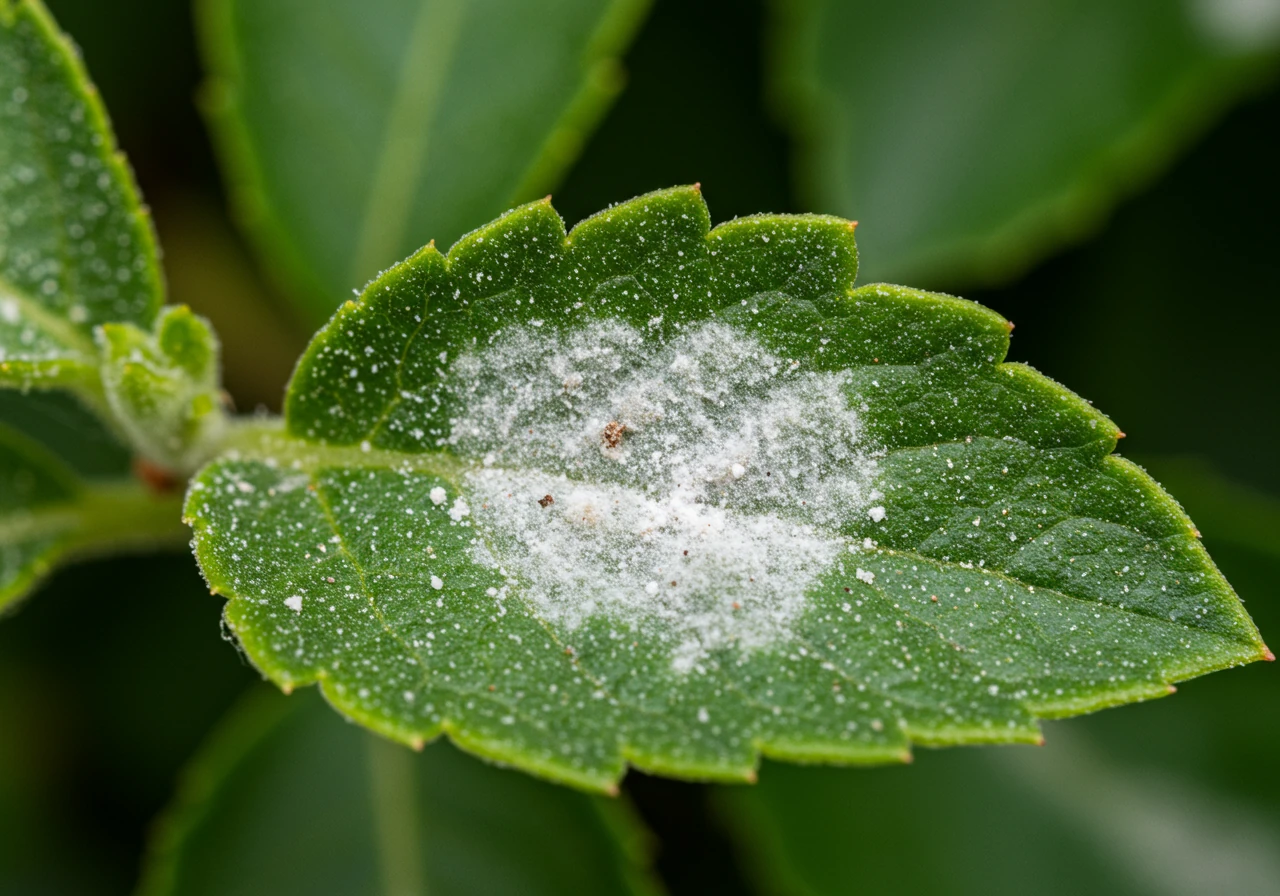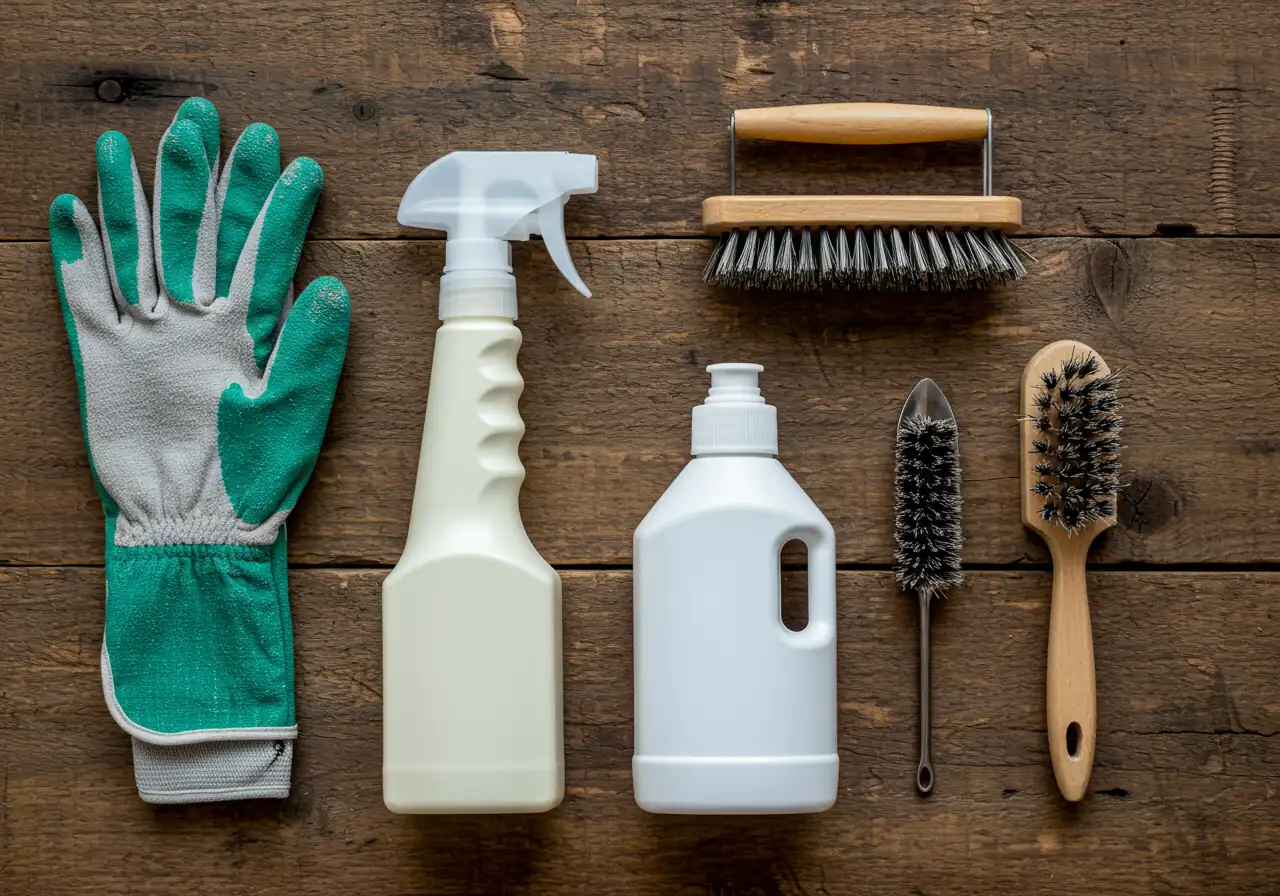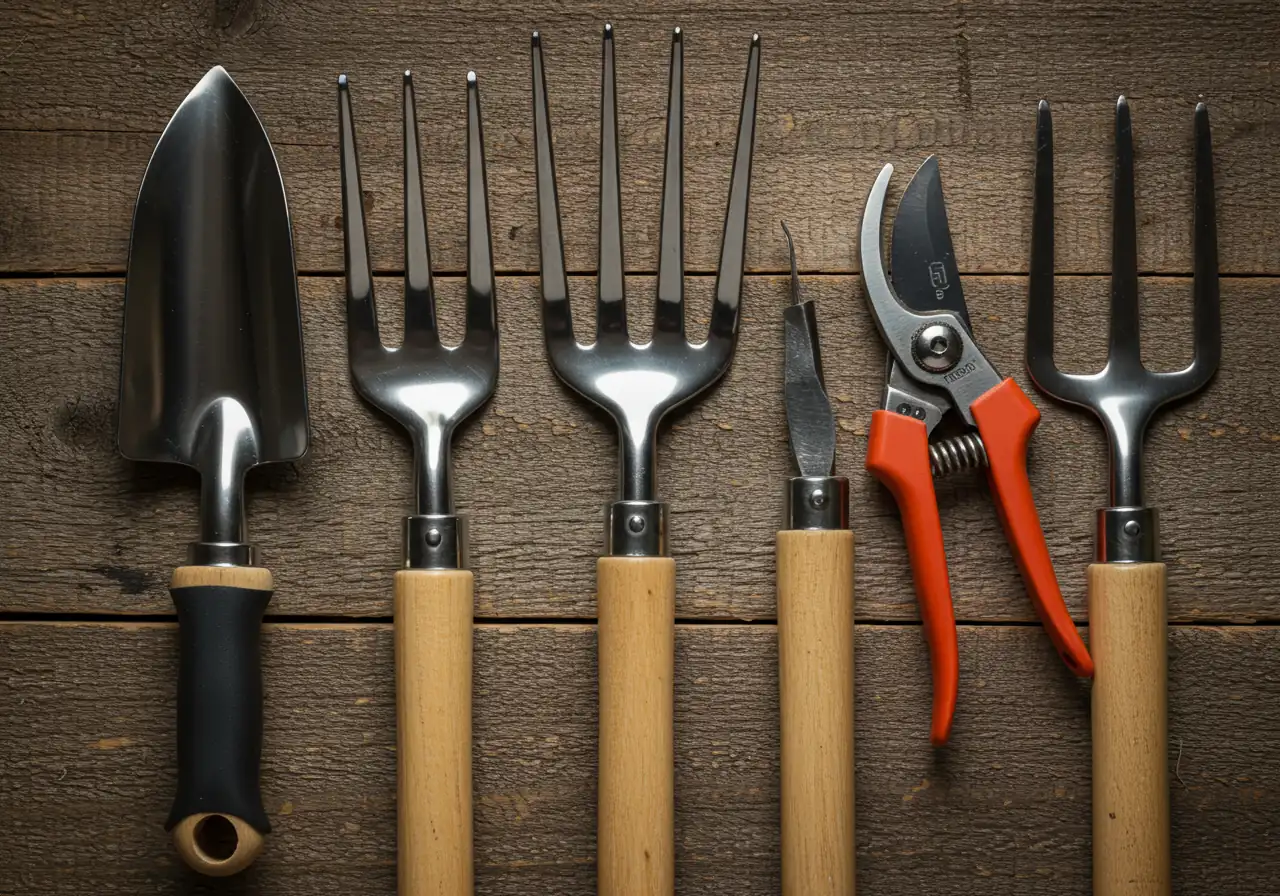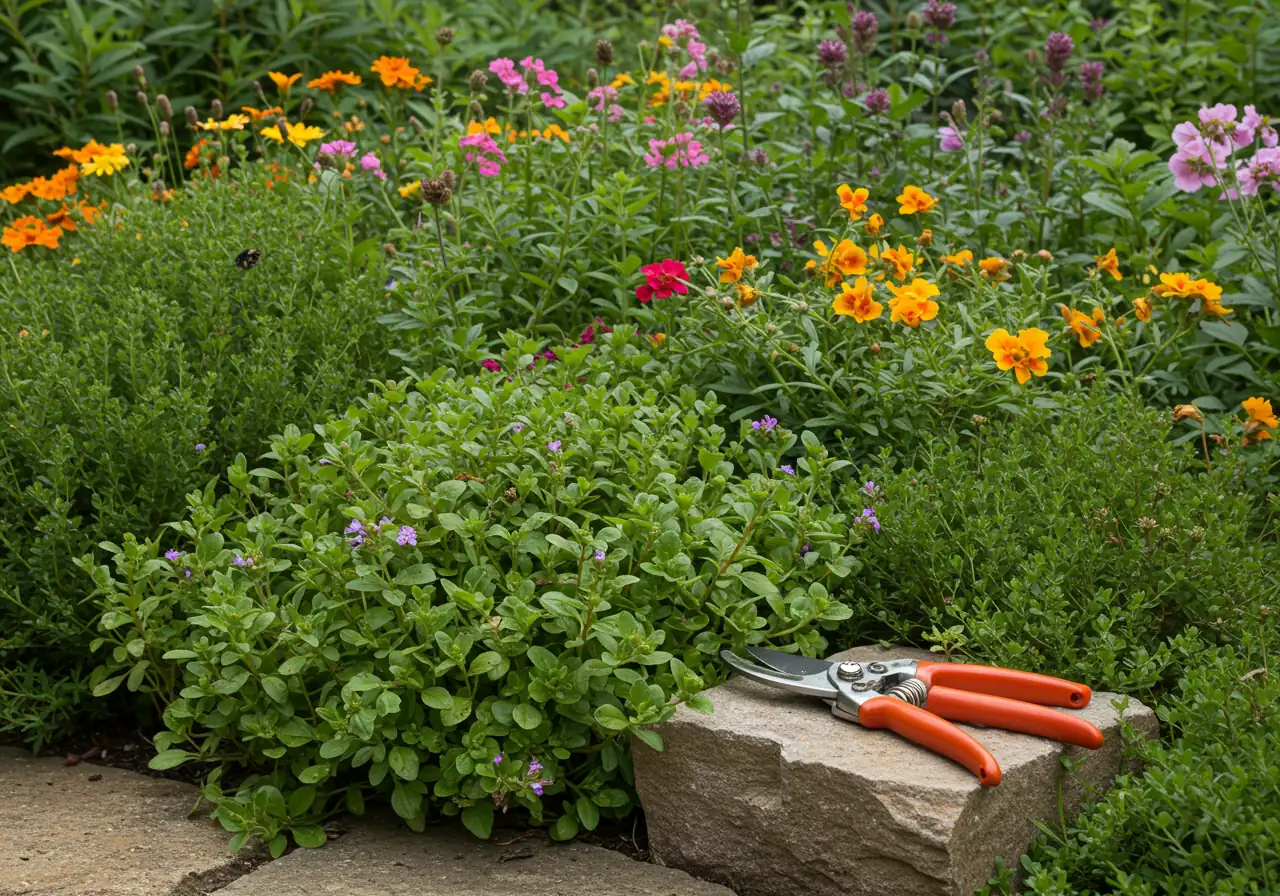Stop Disease Spread Kars: Sterilize Garden Tools Now
Quick Summary
Dirty garden tools can easily spread plant diseases like fungi, bacteria, and viruses from one plant to another. Keep your Kars garden healthy by:
- Cleaning tools after each use to remove soil and debris.
- Disinfecting tools (especially cutting tools) with solutions like 10% bleach or 70% rubbing alcohol between plants, particularly after touching diseased ones.
- Following a regular sterilization schedule throughout the gardening season.
- Storing tools properly in a dry place.
Need professional help keeping your garden pristine? Request your free estimate today!
Introduction: Keeping Kars Gardens Healthy - Why Your Garden Tools Need a Spa Day
Ah, Kars! There's nothing quite like the satisfaction of a thriving garden, whether you're cultivating colourful blooms or tending a veggie patch near the Rideau. We pour our energy into soil, sun, and water, hoping for beautiful results in our lovely corner of Ottawa. But sometimes, despite our best efforts, plant diseases can creep in, turning healthy foliage sad and droopy seemingly overnight. What if the culprit isn't just a bug, but something hiding in plain sight?
Believe it or not, your hardworking garden tools – those trusty trowels, pruners, and spades – can be unwitting villains! As you move from plant to plant, they can easily pick up microscopic fungi, bacteria, or viruses from an infected plant and spread them to healthy ones. Think of it like your tools catching a plant cold and then sneezing all over the neighbourhood! This is especially true in established Kars gardens where plants grow close together.
But don't despair! There's a simple, effective way to stop this spread in its tracks: giving your tools a regular cleaning, or as we like to call it, a "spa day." Proper tool sterilization is a cornerstone of healthy gardening and landscaping practices. It’s a quick step that makes a *huge* difference in preventing the spread of diseases and keeping your Kars garden looking its absolute best all season long.
The Invisible Invasion: Plant Diseases Lurking in Your Ottawa Garden

Ever noticed weird spots on your rose leaves, a fuzzy coating on your squash, or sudden wilting on your tomatoes even though you *know* you watered them? Welcome to the world of plant diseases, the microscopic party crashers of the gardening world! Here in Ottawa, our lovely (and sometimes soggy!) climate can be a perfect breeding ground for these unwanted guests. They're like tiny ninjas – you often don't see them coming until they've already made a mess.
So, who are these invisible invaders? They mainly fall into three sneaky categories:
- Fungi: These are the most common culprits in Ottawa gardens, especially during our humid summers. Think of things like powdery mildew (that white dusty look on phlox or cucumbers), black spot on roses, or rust on hollyhocks. Fungi love moisture and can spread like wildfire, especially when plants are crowded together.
- Bacteria: These single-celled troublemakers can cause issues like leaf spots that look water-soaked or blights that make stems and leaves look burnt. Fire blight on apple or pear trees is a notorious bacterial problem.
- Viruses: Plant viruses work much like human viruses, hijacking the plant's cells. They often cause distorted growth, strange yellow mottling, or mosaic patterns on leaves. Annoyingly, there's often no "cure" once a plant is infected.
Ottawa's specific conditions play a role too. Our sometimes heavy clay soil, common in areas from Greely to Nepean, can hold water, creating damp conditions fungi adore. The swing between cold winters and warm, humid summers also puts stress on plants, potentially making them more vulnerable.
Now, how do these tiny terrors travel from one plant to another? While wind and splashing water are major movers, your *own garden tools* are prime getaway vehicles! Imagine pruning a rose bush with black spot. Microscopic fungal spores stick to your pruners like glitter. Then, you move on to trim a perfectly healthy rose bush... oops! You've just become an unwitting disease delivery service. The same goes for trowels digging around infected roots or shovels moving contaminated soil.
This is why prevention is key! Keeping tools clean isn't just about looking professional; it's a vital step in plant health. Regularly disinfecting your tools stops you from accidentally spreading these microscopic villains around your garden. Making sure you keep your Greely garden tools sharp and clean helps prevent disease spread. Good air circulation is also crucial; consider why Kars thinning perennials in fall aids disease prevention. Being vigilant throughout the growing season helps too – learn how Nepean plant care can stop summer diseases and save your plants. And don't forget that a final check before winter is wise; performing a good Kenmore fall scan for plant disease can help you spot problems before they overwinter.
Dealing with plant diseases can feel overwhelming, but simple steps make a big difference. And if you're facing a persistent problem or need help with garden cleanup to reduce disease pressure, remember that professional help is available through our comprehensive landscaping services. Explore our Google My Business page for reviews and updates!
Don't Let Your Tools Turn Traitor: Why Sterilization is Non-Negotiable
Think of your trusty trowel, your sharpest secateurs, that reliable shovel... they're your garden buddies, right? Your partners in cultivating curb appeal and backyard beauty. But here’s the slightly scary truth: if you aren’t sterilizing them regularly, these hardworking helpers can become accidental double agents, spreading plant diseases without you even realizing it. *Gasp!* Okay, maybe not *that* dramatic, but seriously, it's a big deal.
Imagine using a tissue when you have a cold, and then handing that same tissue to a friend. You wouldn’t, right? Well, using dirty garden tools is kind of the same thing for your plants. When you prune a branch with a fungal issue or dig up a plant suffering from root rot, microscopic pathogens – bacteria, fungi, viruses – hitch a ride on your tools. Move onto the next perfectly healthy shrub or flower, and *poof*! You've just hand-delivered an infection. Suddenly, that annoying leaf spot you noticed on one plant in your Osgoode garden bed is now staging a hostile takeover across the entire border.
Ignoring tool sterilization is like playing Russian roulette with your plant health. The consequences?
- Rapid Disease Spread: What starts as a small problem can quickly become an epidemic throughout your yard or veggie patch in Metcalfe.
- Wasted Effort & Money: You'll spend precious time and resources trying to cure sick plants, sometimes needing costly fungicides or even having to remove plants entirely.
- Loss of Beloved Plants: Some diseases, once established, are very difficult or impossible to cure, meaning you could lose mature shrubs, favourite perennials, or productive fruit trees you've nurtured for years.
This isn't just about aesthetics; it's about protecting your gardening investment. The simple act of wiping down your pruners with rubbing alcohol or dipping your trowel in a bleach solution (usually 1 part bleach to 9 parts water) between plants, *especially* after working with anything that looks unwell, is crucial. It’s a cornerstone of responsible garden maintenance.
Skipping this step can undermine all the other care you provide. If things have gotten a bit out of hand, or you want to ensure your yard starts with a clean bill of health, professional help can make a world of difference. Whether it's a general Ottawa yard cleanup service to remove potentially diseased debris, targeted help like our Metcalf yard cleanup service, or even tackling larger jobs with our Kenmore property cleanup service, starting clean is vital. You can explore all our professional landscaping services to find the right fit.
So please, don't let your tools betray your garden's trust. Make sterilization a quick, easy, *non-negotiable* step in your routine. Your plants will thank you!
Choosing Your Weapon: A Guide to Garden Tool Disinfectants
Okay, you know *why* you need to give your garden tools a spa day, but *what* exactly do you use for the scrub-down? Choosing the right disinfectant can feel a bit like picking your champion in a gardening duel against microscopic baddies. Don't worry, it's simpler than it sounds! Let's explore your options to keep those tools from turning traitor in your Barrhaven backyard.

First things first: *always* clean the dirt and gunk off your tools *before* disinfecting. Think of it like washing your hands before using hand sanitizer – the disinfectant works best on a clean surface. A stiff brush and some water usually do the trick. Once clean, it's time to bring out the big guns (or, you know, the spray bottle).
Household Bleach (Sodium Hypochlorite)
The classic warrior.
- How to Use: Mix 1 part bleach with 9 parts water (10% solution). Soak metal parts 10-30 mins or wipe thoroughly. Rinse well with water & dry completely (prevents rust).
- Pros: Cheap, readily available, kills wide range of pathogens quickly.
- Cons: Corrosive (rinse!), damages clothes, fumes (ventilate!), loses effectiveness quickly when mixed/exposed to sun, less effective on porous wood.
Rubbing Alcohol (Isopropyl) or Ethanol
The quick-draw artist.
- How to Use: Use 70-100% solution. Wipe or spray onto tool surface. No rinsing needed (evaporates).
- Pros: Kills fast, evaporates quickly, less corrosive than bleach, convenient for quick wipes.
- Cons: More expensive, flammable, can dry out wood handles over time.
Household Disinfectant Cleaners (e.g., Lysol)
The multi-taskers.
- How to Use: Follow label directions for dilution and contact time. Some may need rinsing.
- Pros: Often cleans & disinfects, widely available.
- Cons: Effectiveness varies vs. specific plant pathogens, may contain unneeded additives, potential residue, cost varies.
Other Options
Hydrogen Peroxide (3%): Less corrosive, eco-friendlier breakdown. Spray/dip, let bubble. May be slower acting.
Vinegar (White, 5%): Inexpensive, less toxic. Needs longer contact (30+ mins), rinse after. Less effective vs. many pathogens, corrosive over long exposure. Best for general cleaning.
Safety First, Always!
- Wear gloves (especially with bleach!).
- Work in a well-ventilated area, preferably outdoors.
- Never mix different types of cleaners (especially bleach + ammonia = dangerous fumes!).
- Keep disinfectants out of reach of children and pets. Check terms and conditions for safe handling practices if unsure.
Making it Routine
The best approach? Keep a small spray bottle of 70% rubbing alcohol or a jar of 10% bleach solution handy while you're gardening, especially if you're pruning or dealing with suspicious-looking plants. A quick wipe or dip between plants, particularly in established Manotick gardens where diseases might linger, can make all the difference. For end-of-season storage or after tackling a diseased plant, a more thorough soak is a good idea.
Remember, keeping tools clean is just one part of maintaining a healthy garden. Proper plant spacing, good air circulation, and timely cleanup are also key. If you're dealing with widespread issues or just need a reset, professional help like an Ottawa garden clean up service can remove infected debris and give you a fresh start. This is especially important before undertaking a new garden install to avoid introducing problems. For larger properties needing significant clearing to reduce pathogen reservoirs, consider options like our Marionville property cleanup service or the broader Ottawa property cleanup service. And never underestimate the value of a general fall tidying; our regular Ottawa yard cleanup service helps prepare your space for a healthier spring. See our material selection guide for healthy garden options.
Choose your disinfectant wisely, use it safely, and keep those tools sparkling clean – your plants will thank you for it!
Operation Sparkle Clean: Your Step-by-Step Tool Sterilization Guide
Alright, let's get those trusty garden sidekicks shining like new! Welcome to Operation Sparkle Clean – your mission, should you choose to accept it, is to banish dirt and disease from your tools. It’s easier than wrestling a stubborn weed, promise! Here’s your step-by-step guide:

Ready your grime-fighting gear! Before you start, grab these essentials:
- Stiff brush (a wire brush works great for stubborn stuff)
- Bucket or tub
- Water source (hose or tap)
- Your chosen disinfectant (remember our chat about bleach solutions, rubbing alcohol, etc.?)
- Clean cloths or towels
- Gloves (especially if using bleach!)
- Step 1: Banish the Big Bits
First things first, knock off the loose dirt, leaves, and grass clippings. Use your stiff brush to scrape away any dried-on mud. If you're gardening in areas with heavy Ottawa clay, like parts of Nepean or down near Manotick, you know that stuff sticks like glue! A putty knife or old screwdriver can help pry off stubborn clumps before brushing. - Step 2: Give 'Em a Bath
Now, wash your tools with soap and water. An eco-friendly dish soap works fine. Get into all the nooks and crannies – especially important for tools with moving parts like pruners or loppers. Rinse them well with clean water. This step removes surface grime so the disinfectant can actually reach the tool surface and zap those nasty critters. - Step 3: The Disinfection Dunk (or Wipe!)
Time for the main event! Apply your chosen disinfectant according to the instructions we discussed earlier.- For bleach solution (1 part bleach: 9 parts water): Soak metal parts for about 10-30 minutes. Don't soak wooden handles too long.
- For rubbing alcohol (70% or higher): Simply wipe or spray it thoroughly onto the tool surface. It evaporates quickly.
- For other disinfectants: Follow the product label directions carefully regarding concentration and contact time.
- Step 4: Rinse (If Needed)
If you used bleach, *definitely* rinse your tools thoroughly with clean water. Bleach is corrosive and can damage metal over time if left on. If you used alcohol, you can usually skip this step. - Step 5: Dry Off Completely
Don't let the rust monsters win! Use clean cloths or towels to dry your tools completely. You can even leave them out in the sun for a bit on a nice day to ensure they're totally moisture-free. - Step 6: Store Smart
Hang your clean, dry tools up or store them in a dry place like a shed or garage. Avoid leaving them outside exposed to the elements (or buried under that pile of garden debris you meant to clear!). Keeping them organized makes them easy to find for your next gardening adventure.
Making tool cleaning a regular habit, especially after pruning diseased plants or working in different garden areas, is key. It supports not just your flower beds, but your entire yard's ecosystem, contributing to better overall lawn care and health.
If you're facing a garden where disease has run rampant, or the cleanup feels overwhelming (maybe involving lots of old, potentially contaminated tools and debris), sometimes calling in reinforcements is the best strategy. Services like our local Marionville yard cleanup service or a comprehensive Ottawa property cleanup service can help you reset. If you're considering professional help and want to share details or see what's involved, feel free to use our estimate and feedback form. We value your input, and rest assured, your information is handled carefully according to our Privacy Policy.
Now go forth and make those tools sparkle! Your happy, healthy Ottawa garden awaits.
Illustrative Impact of Tool Sterilization
Note: Chart shows hypothetical disease spread reduction based on tool hygiene practices.
Timing is Everything: A Sterilization Calendar for Ottawa Gardeners
So, you're ready to banish those microscopic nasties from your garden tools – fantastic! But *when* exactly should you be doing this disinfecting dance? Is it a once-a-year thing, or more like brushing your teeth? (Spoiler: It’s closer to brushing your teeth!). Knowing the right moments to sterilize is key to keeping your garden healthy and thriving from Richmond to Barrhaven. Let's break it down by season:
Spring Awakening (Late March - May)
Give tools a pre-season clean & disinfect. Sterilize *between* trees/shrubs when pruning (esp. dormant pruning). Clean tools when dividing perennials – vital for all tasks, including prep for new sod installation.
Summer Sizzle (June - August)
Wipe tools (alcohol recommended) *between different plants* when deadheading or harvesting. *Crucially*, sterilize immediately after touching any sick plant before moving to a healthy one. Consider cleaning mower blades if lawn diseases appear.
Fall Cleanup Duty (September - November)
Sterilize frequently when cutting back perennials or removing annuals, especially diseased ones. Clean between plants for any fall pruning. Give tools a final thorough clean, disinfect, and dry *before* winter storage. A professional Metcalf garden clean up service or city garden clean up service can help remove infected debris.
Winter Hibernation (December - March)
Mainly downtime. A good time to inspect clean tools, sharpen blades, and oil metal parts to prevent rust. No major sterilization needed unless doing indoor gardening or winter pruning.
Making tool sterilization a regular part of your gardening routine might seem like extra work, but it’s one of the simplest, most effective ways to prevent disease headaches and ensure your garden looks amazing. You can see the difference healthy practices make by browsing through our inspiring garden transformations gallery. Facing a big cleanup job to get back on track? We're here to help – tell us about your project using our quick estimate and feedback form!
For more local gardening advice, check out resources from the Master Gardeners of Ottawa-Carleton or the City of Ottawa's tree planting information.
Quick Tips for Top-Notch Tool Hygiene
Keeping your garden tools clean doesn't have to be a chore! Think of it as a quick spa treatment for your trusty sidekicks. Here are the key takeaways to keep your Ottawa garden healthy and happy:
- Scrub Before the Rub: Always, *always* clean off the visible dirt, mud, and plant gunk *before* you use a disinfectant. Sanitizer can't work its magic through a layer of grime! Getting tools truly clean is fundamental, impacting everything from digging to essential soil preparation techniques.
- Pick Your Potion (Safely!): Rubbing alcohol (70%+) is super handy for quick wipes between plants, especially when you're busy in your Barrhaven garden beds. A 10% bleach solution works well for soaking (1 part bleach, 9 parts water), but remember to rinse tools well afterwards and wear gloves!
- Wipe Often, Especially Between Plants: Get into the habit of wiping down cutting tools (pruners, shears) with alcohol *between* different plants, particularly if one looks even slightly unwell. This prevents accidentally spreading issues and keeps things tidy for tasks like creating crisp lines during mulching and edging. Don't be an accidental disease courier!
- Dry Them Like You Mean It: Moisture equals rust, the arch-nemesis of good tools! After washing and rinsing (especially after using bleach), dry your tools completely with a towel or let them sunbathe for a bit. Well-maintained tools make every job easier, including the groundwork needed when getting ready for new sod installation.
- Store Smart and Tidy Up: Hang your clean, dry tools in a shed or garage, not lying in the wet grass. Remember that tool hygiene pairs with garden hygiene – removing diseased plant debris is vital. If you're facing a mountain of cleanup, consider getting help with a professional property clean-up to remove potential disease sources. Explore our services for city yard cleanup or specific needs like Metcalf property cleanup.
- Consistency is Queen (and King!): Making this a quick, regular habit is far easier than dealing with widespread plant disease later. A few minutes of cleaning saves hours of headache. Thank you for putting in the effort – your plants appreciate it! Learn more about our approach on our About Us page.
Ottawa Garden FAQs: Your Tool Sterilization Questions Answered
Great question! Think of it this way: definitely clean them after each gardening session. But *sterilize* (using disinfectant) especially *between* pruning different shrubs or trees, and *immediately* after working with any plant you suspect is diseased. Doing a quick wipe with rubbing alcohol between healthy plants is ideal, especially during peak growing season. Consistent care keeps your Barrhaven garden healthy, which is something our city garden maintenance service always prioritizes.
If only it were that easy! Rinsing removes visible dirt (important!), but those pesky microscopic disease pathogens – fungi, bacteria, viruses – are clingy little things. Water alone won't kill them. You need a disinfectant like rubbing alcohol or a bleach solution to actually neutralize the threat and stop them from spreading to your next unsuspecting plant. Proper techniques matter, as you can learn more about us and our commitment to healthy gardens. Check our city property cleanup service page for details on thorough cleanups.
Don't panic, but act fast! Stop using those pruners immediately. Don't even think about touching another plant with them. Head straight for your cleaning station. First, scrub off any debris, then give them a thorough soak in a 10% bleach solution for 10-30 minutes or wipe them down meticulously with 70% rubbing alcohol. Rinse (if using bleach) and dry well. This stops the black spot spores from hitching a ride elsewhere!
While we love eco-friendly options, vinegar isn't the strongest fighter against tough plant diseases. Household vinegar might kill *some* pathogens with long contact times, but it's much less effective than bleach or alcohol, especially for serious issues. It's better for general cleaning than for reliable sterilization when disease is a concern. Stick to proven disinfectants for the heavy lifting against plant pathogens in your Greely garden beds. If you need help managing garden health, consider our garden maintenance options.
Tool sterilization is a huge step, so thank you for caring about garden health! However, diseases can also spread via wind, water splash, insects, or persist in soil and infected plant debris. Ensure good air circulation, proper watering (at the base of plants!), and promptly remove diseased material. Sometimes, a thorough cleanup is needed to reset things, like the work done by our specialized Marionville garden clean up service, removing overwintering disease sources. Our general property clean up services cover many areas including Marionville yard cleanup.
Conclusion: Healthy Tools, Happy Gardens Across Ottawa

So, what’s the big takeaway from our little chat about tool spa days? Simply put: clean tools are your garden's best friends! Giving your pruners, spades, and trowels a quick sterilization isn't just fussy – it's smart gardening. It stops those microscopic villains, the fungi and bacteria, from hitching a ride and causing trouble across your beautiful Ottawa landscape, whether you're tending roses in Kars, veggies in Manotick, or perennials in Barrhaven or even Nepean. Remember, preventing disease spread is *way* easier than trying to cure it!
Making tool hygiene a simple habit protects your plants and saves you headaches down the road. Healthy tools really do mean happy gardens. Ready to embrace the sparkle? Make Operation Sparkle Clean part of your routine starting now! And hey, if your garden needs a bigger reset, or you'd love expert help keeping things pristine with professional garden maintenance or a thorough Ottawa yard cleanup service, don't hesitate to reach out. Explore all our professional landscaping services and let's cultivate some healthy, happy green spaces together! Contact us for more information.

